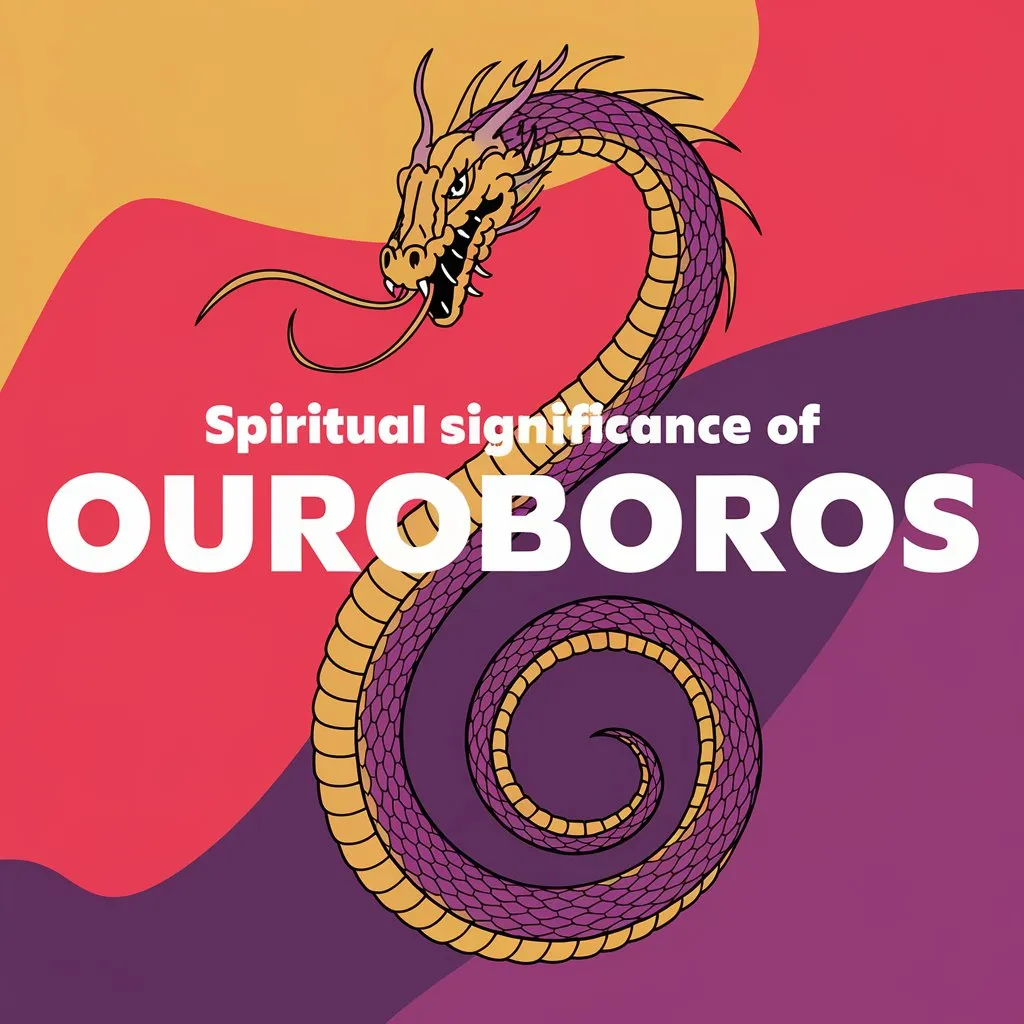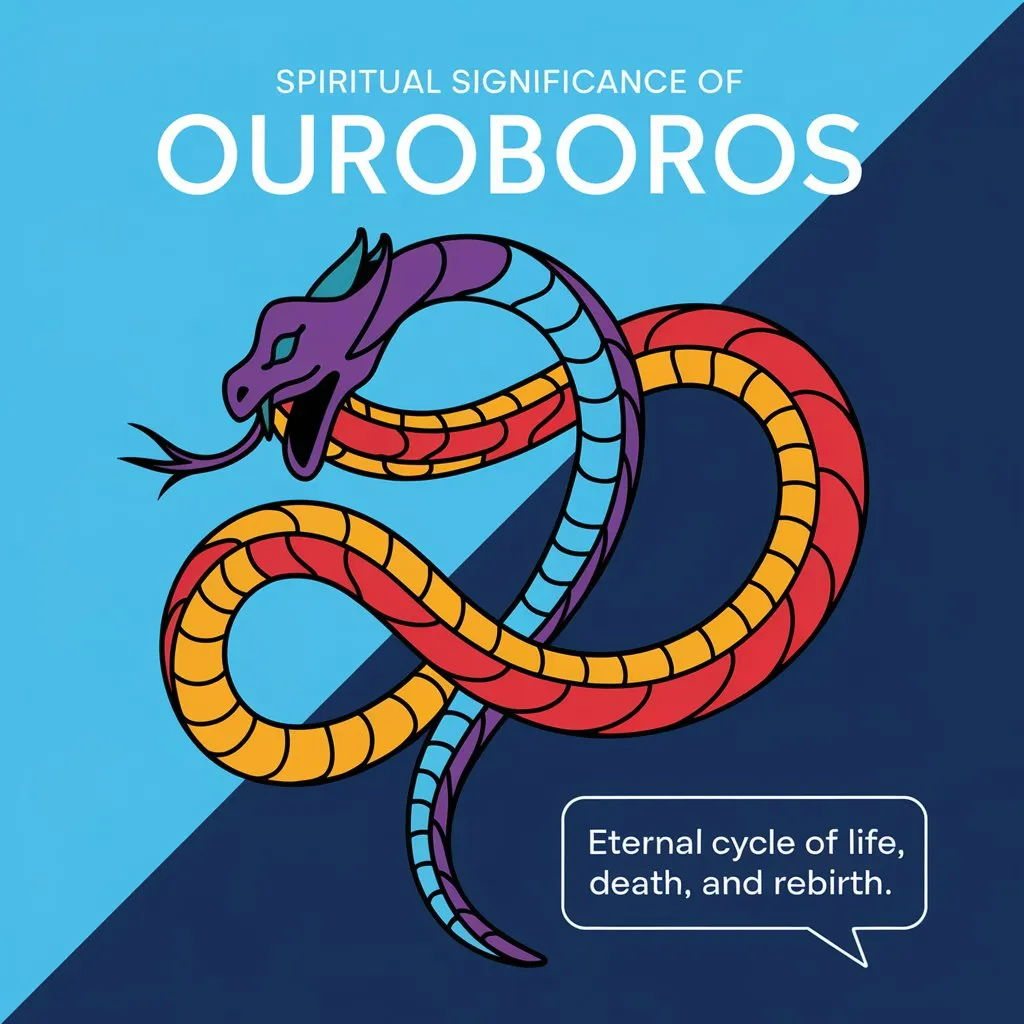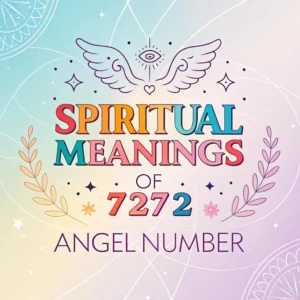The ouroboros, an ancient symbol depicting a serpent or dragon devouring its own tail, holds profound spiritual significance across various cultures and belief systems.
This enigmatic image has captivated human imagination for millennia, representing the eternal cycle of creation and destruction, as well as the unity of all things.
Key Takeaways: The Essence of Ouroboros

- Eternal Cycle: The ouroboros symbolizes the continuous cycle of life, death, and rebirth, reminding us that endings are merely new beginnings.
- Unity and Wholeness: Its circular form represents the integration of opposites and the interconnectedness of all aspects of existence.
- Spiritual Transformation: The symbol embodies the journey of the soul towards enlightenment and self-realization.
- Alchemical Significance: In alchemy, the ouroboros represents the unity of all things material and spiritual, and the cyclical nature of transformation.
- Kundalini Connection: The symbol relates to the concept of Kundalini energy in Hindu and yogic traditions, representing spiritual awakening.
- Modern Relevance: The ouroboros continues to resonate in contemporary psychology and spirituality, offering insights into self-understanding and personal growth.
- Invitation to Wisdom: Meditating on the ouroboros can deepen our understanding of existence and our place within the cosmic cycle.
The Origins and Evolution of the Ouroboros Symbol

The ouroboros has a rich history dating back to ancient civilizations. Its earliest known appearance was in the tomb of Tutankhamun from 14th century BCE Egypt, where it symbolized the cyclical nature of time.
The symbol later spread to other cultures, including ancient Greece, Norse mythology, and Hinduism, each imbuing it with their own interpretations and meanings.
The enduring appeal of the ouroboros lies in its universal symbolism. Across cultures and time periods, this powerful image has consistently represented the cyclical nature of existence and the interconnectedness of all things.
Its ability to convey complex philosophical and spiritual concepts through a simple, yet profound visual metaphor has ensured its continued relevance in human consciousness.
The Eternal Cycle: Creation, Destruction, and Rebirth
At its core, the ouroboros represents the concept of eternal cyclic renewal. The serpent consuming its own tail symbolizes:
- The continuous cycle of life, death, and rebirth
- The interconnectedness of all things
- The eternal nature of the universe
This powerful imagery reminds us that endings are merely new beginnings in disguise, encouraging a perspective of life as an ongoing process of transformation and growth.
The ouroboros serves as a powerful reminder of the impermanence of all things and the constant flux of existence. It encourages us to embrace change as a natural and necessary part of life, rather than resisting it.
By understanding the cyclical nature of creation and destruction, we can find comfort in the knowledge that even in moments of endings, new beginnings are always on the horizon.

Unity and Wholeness: The All-Encompassing Nature of Existence
The circular form of the ouroboros embodies the concept of unity and wholeness. It represents:
- The integration of opposites
- The balance between light and dark, good and evil
- The interconnectedness of all aspects of existence
This symbolism encourages us to embrace the totality of our being, acknowledging both our light and shadow aspects as essential parts of the whole.
The ouroboros invites us to transcend dualistic thinking and recognize the fundamental unity underlying all apparent opposites.
It challenges us to embrace complexity and see beyond simplistic categorizations of good and bad, right and wrong.
By acknowledging the interconnectedness of all things, we can cultivate a more holistic and compassionate worldview.
Spiritual Transformation and Self-Realization
In many spiritual traditions, the ouroboros serves as a powerful symbol of spiritual transformation and self-realization. It represents:
- The journey of the soul towards enlightenment
- The process of shedding old patterns and beliefs
- The ultimate union of the individual self with the divine
This interpretation invites us to embark on a journey of self-discovery and inner growth, constantly shedding our old selves to reveal our true divine nature.
The ouroboros reminds us that spiritual growth is not a linear process, but a continuous cycle of transformation. It encourages us to embrace change and let go of outdated beliefs and patterns that no longer serve us.
By viewing our spiritual journey through the lens of the ouroboros, we can find the courage to continually reinvent ourselves and move closer to our highest potential.

The Ouroboros in Alchemy and Gnosticism
The ouroboros played a significant role in both alchemy and Gnosticism, where it symbolized:
- The unity of all things material and spiritual
- The cyclical nature of the alchemical process
- The concept of the “One” or the ultimate divine reality
In these esoteric traditions, the ouroboros represented the ultimate goal of spiritual and material transformation, encouraging practitioners to seek unity with the divine.
The alchemical and Gnostic interpretations of the ouroboros highlight its role as a symbol of ultimate transformation.
In these traditions, the serpent devouring its tail represents the dissolution of the material world and its reintegration into the spiritual realm.
This process of purification and unification is seen as the key to attaining higher consciousness and realizing one’s true divine nature.
The Kundalini Connection: Serpent Energy and Spiritual Awakening
In Hindu and yogic traditions, the ouroboros symbolism is closely related to the concept of Kundalini energy. This divine power is often depicted as a coiled serpent at the base of the spine, which when awakened, rises through the chakras to bring about spiritual enlightenment.
The connection between the ouroboros and Kundalini energy highlights the transformative power of spiritual awakening. Both symbols represent a dormant potential within us that, when activated, can lead to profound spiritual growth and self-realization.
The circular nature of the ouroboros mirrors the cyclical journey of Kundalini energy as it rises and descends through the chakras, continually refining and purifying our consciousness.

The Ouroboros in Modern Spirituality and Psychology
The symbolism of the ouroboros continues to resonate in modern spiritual and psychological contexts:
- Carl Jung interpreted it as a symbol of the integration of the shadow self
- It represents the concept of self-reflexivity in systems theory
- The symbol is used in various New Age and neo-pagan spiritual practices
These modern interpretations demonstrate the enduring power and relevance of this ancient symbol in our quest for self-understanding and spiritual growth.
The contemporary relevance of the ouroboros speaks to its timeless wisdom and universal appeal. In modern psychology, it serves as a powerful metaphor for the integration of the unconscious and the journey towards wholeness.
Its circular form resonates with current understanding of feedback loops and interconnected systems, offering insights into both personal growth and broader societal dynamics.

Embracing the Wisdom of the Ouroboros
The ouroboros invites us to:
- Recognize the cyclical nature of life and embrace change
- Seek balance and integration of opposing forces within ourselves
- Embark on a journey of continuous self-transformation and spiritual growth
By meditating on this powerful symbol, we can gain deeper insights into the nature of existence and our place within the grand cosmic cycle.
The wisdom of the ouroboros offers a profound perspective on life and spirituality. It encourages us to embrace change as a natural and necessary part of growth, reminding us that even in moments of apparent destruction, new life and opportunities are being born.
By internalizing the lessons of the ouroboros, we can cultivate greater resilience, adaptability, and spiritual awareness in our daily lives.
FAQs About the Ouroboros
What is the literal meaning of “ouroboros”?
The term “ouroboros” comes from the Ancient Greek words “oura” meaning tail and “boros” meaning eating. Thus, it literally translates to “tail-devouring”.
How is the ouroboros related to infinity?
The circular shape of the ouroboros, with no beginning or end, is often associated with the concept of infinity. It represents the eternal cycle of creation and destruction, symbolizing the infinite nature of time and existence.
Are there any real animals that inspired the ouroboros symbol?
While the ouroboros is primarily a mythical symbol, some real-world behaviors may have inspired it. Certain snakes, when stressed or overheated, may bite their own tails, creating a circular shape reminiscent of the ouroboros.
How can I incorporate the symbolism of the ouroboros into my spiritual practice?
You can meditate on the image of the ouroboros, use it as a focal point for contemplation, or wear jewelry featuring the symbol as a reminder of its spiritual teachings. Reflecting on the cyclical nature of life and the unity of all things can help deepen your spiritual awareness.
Is the ouroboros symbol used in any modern religions or spiritual movements?
Yes, the ouroboros continues to be used in various modern spiritual contexts, including some New Age practices, neo-pagan traditions, and contemporary interpretations of ancient wisdom traditions. Its universal symbolism makes it adaptable to many different belief systems.

Hello, I’m Zephyra, your guide at SpiritualityEssence.com. I’m passionate about uncovering life’s mysteries and sharing transformative insights. Let’s explore mindfulness, ancient rituals, and the path to a more awakened life together. Join me on this spiritual journey!
















